Naples is included on the list of millions of tourists and explorers as one of those cities to absolutely visit at least once in a lifetime. In 2024 Naples was crowned over and over again as a record-breaking city in terms of visitor numbers: a tourist destination of excellence in Italy and Europe.
Naples is a city full of surprises that amazes and bewitches you every time you visit, as if it were always the first time. The truth is that once is not enough for you to say you know it, even the Neapolitans themselves are amazed every day by something new and different.
Naples has so much to tell and show that making a complete list of the things that make Naples famous in the world is always very complicated... It ends up that there is always something you have forgotten.
But what makes Naples famous in the world? Visit Italy has tried to compile a list of what are the main features of the city of Naples, its lights and shadows to give you a hint of what are the thrills and surprises that Naples has in store for you!
Naples is famous for multiple aspects that make it a unique and fascinating city, first and foremost for its history and culture.Founded by the Greeks in the 18th century B.C., it boasts a history of thousands of years with a succession of dominations leaving a priceless legacy of monuments, works of art and traditions. Its historic center, the largest in Europe, has been declared a UNESCO World Heritage Site.
Naples is famous for its pizza and gastronomy, it is famous for its landscapes and nature, for lying at the foot of Vesuvius, an active volcano, but its geographical location makes it an ideal point for exploring both the Sorrento coast and the Gulf Islands.
Naples is famous for its Neapolitans, known for their hospitality, warmth and liveliness. Naples has given birth to great artists, musicians and composers such as Caravaggio, Totò, Enrico Caruso, Lucio Dalla, Pino Daniele, Massimo Troisi and many others...
If after reading this article you feel like visiting this incredible city, choose a comprehensive tourist pass like the Naples Pass to discover it at its best, without stress and in complete comfort.
Discover more about Naples Pass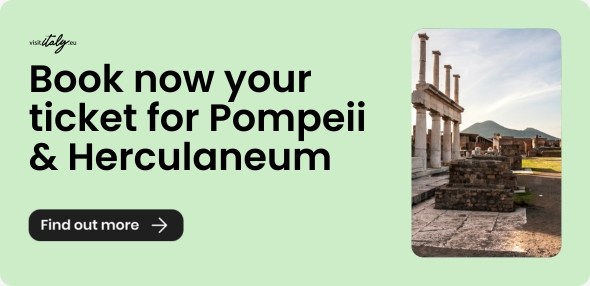
Napule è mille culure / Napule è mille paure / Napule è a voce de' criature / Che saglie chianu chianu / E tu sai ca' non si sulo (Naples is a thousand colours / Naples is a thousand fears / Naples is the voice of children / Which rises slowly / And you know that you are not alone)
20. Her Majesty the Pizza

One of the main reasons Naples is famous all over the planet is definitely pizza. This is where the famous pizza margherita was born, made in honor of the eponymous sovereign by pizzaiolo Raffaele Esposito. It has since become the signature dish not only of the city but of all of Italy. Neapolitan pizza is more than just a meal, it is a sensory experience that conquers the palate and tells a story, combining tradition and innovation in a perfect union.
The city today, with this world record, has the best pizzerias in the world competing with each other to create the best pizza in all of Naples. Pizza was declared a UNESCO World Heritage Site on December 7, 2017.
In addition, Neapolitan pizza is among only two Italian products to earn the European TSG label. The other is mozzarella cheese, always a food produced in Campania and the main ingredient in pizza margherita. Over the years, pizza has changed, transformed but never lost its identity, becoming more and more a gourmet dish but still a traditional Neapolitan dish.
In addition to the classic variants, Neapolitan pizza offers an infinite number of combinations of ingredients, an expression of the creativity of Neapolitan pizza makers and the richness of the gastronomic tradition of Campania. A true excellence.
Discover how to book your experience19. Not just pizza: Neapolitan Cuisine is the best in the world!

Neapolitan Taralli
Naples is not only pizza! Neapolitan cuisine in 2024 was declared, by the American Time Out magazine, the best cuisine in the world! Naples is on top of the world thanks to its traditional cuisine but with an eye for innovation.
Neapolitans are famous for their imagination and creativity, this ability is also very noticeable at the table, a variety of flavors of which it is a great sacrilege not to try if you decide to visit the city.
The Neapolitan culinary tradition is very old and rich. Influenced by the many cultures with which it came into contact during trade and various dominations. An availability of raw materials of the highest quality and a menu that varies between sea and land dishes that can satisfy every palate.
Mozzarella: the undisputed queen of Neapolitan pizza, buffalo mozzarella from Campania, with its soft texture and delicate flavor, enhances the flavors of the ingredients it is paired with.
Eggplant parmigiana: a main course made with fried eggplant, tomatoes, mozzarella and basil, to be enjoyed hot or at room temperature.
Neapolitan ragù: a rich and flavorful sauce, the result of a long cooking process of ground meat, tomatoes, onions and spices, ideal for dressing pasta.
Seafood: very fresh and cooked in a variety of ways, seafood is the protagonist of first courses, main courses and appetizers in the Neapolitan tradition.
What to say then about the confectionery tradition! Neapolitan pastry counts masterpieces such as: sfogliatelle, baba, pastiera, zeppole di San Giuseppe and much more. The Neapolitan pastiera has received recognition as a food product of Campania. Then, as for the sfogliatella, it can be in two variants: the riccia, prepared with puff pastry, and the frolla, with shortcrust pastry.
You can never miss the famous Neapolitan taralli “o‘ tarall’ nzogna e pepe” (meaning lard, that is pork fat, and pepper), represents a real institution, a traditional street food born in the 17th century.
18. Europe's largest Old Town
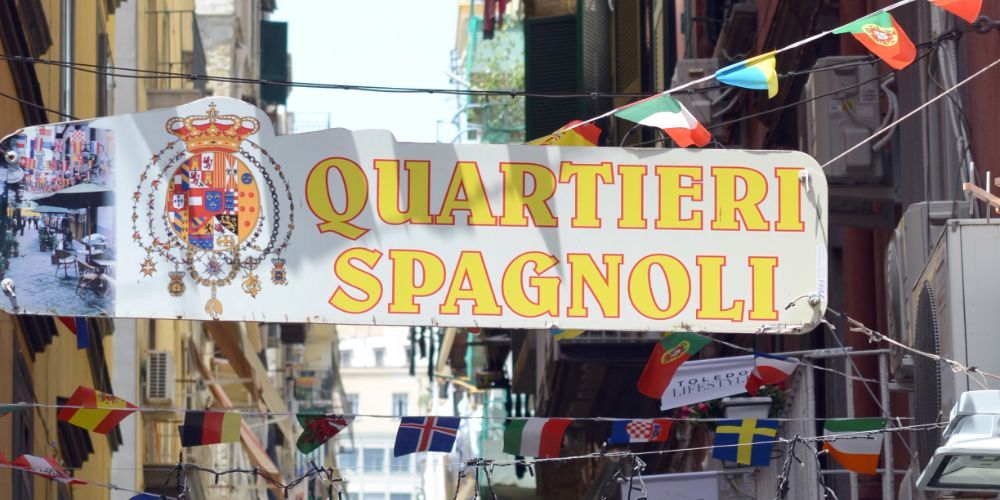
The historic centre of Naples is the largest in Europe. In 1995 it was declared a UNESCO World Heritage Site. Imposing palaces, narrow streets, ancient churches, unique underground landscapes. These are perhaps some of the things that contribute to making the historic centre of Naples the most unchanged in Europe.
It still follows the street plan of the ancient Greek city, Neapolis. One example is the famous 16th-century Quartieri Spagnoli, which still retains the chessboard layout of the Greco-Roman structure.
Therefore, crossing the historic centre of Naples means crossing more than two thousand years long history. It is still possible to see several finds witnessing its immense historical stratification among its alleyways.
Find out how to visit the historic center of Naples17. The 500 Domes
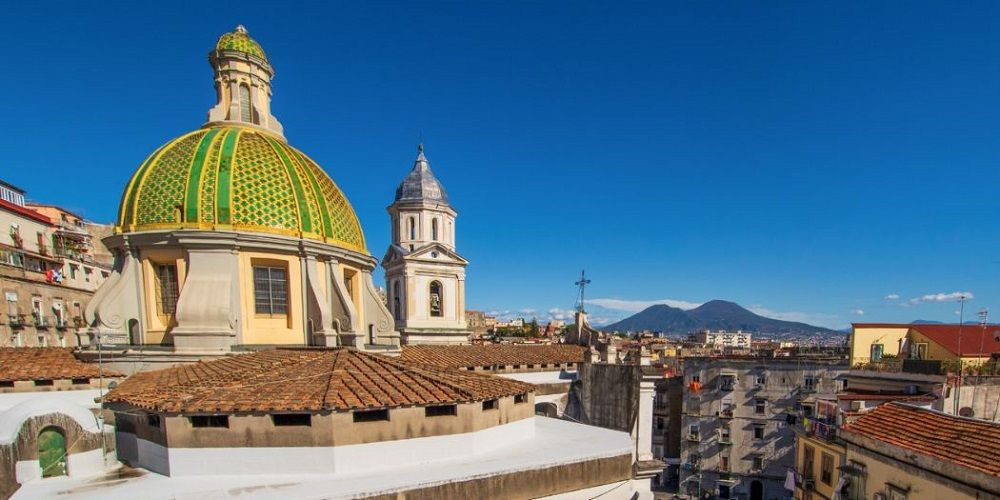
As far as religion is concerned, Naples has a solid Christian-Catholic heritage. Over the years, it has been the nickname of the five hundred domes' city because it is one of the cities with the most places of worship in the world.
In the historic centre alone, there are one after another. They date from the early Christian period to the 20th century. Trying to remember them all is very complicated, and mentioning just a few of them seems almost as if we would be doing the others a disservice.
Among the best known of all are undoubtedly the dome of the Basilica of Santa Maria alla Sanità and the gigantic dome of the Basilica of the Incoronata Madre del Buon Consiglio also called simply “Little St. Peter's,” because it closely resembles St. Peter's Basilica at the Vatican, only smaller.
In addition to the 500 churches, there are about 2000 votive shrines, smaller places of worship that are equally important for the city. They were founded in Greek times and became increasingly widespread in the 18th century with a dual purpose: to evangelise the people and create a street lighting network for the darkest alleys.
16. Mount Vesuvius
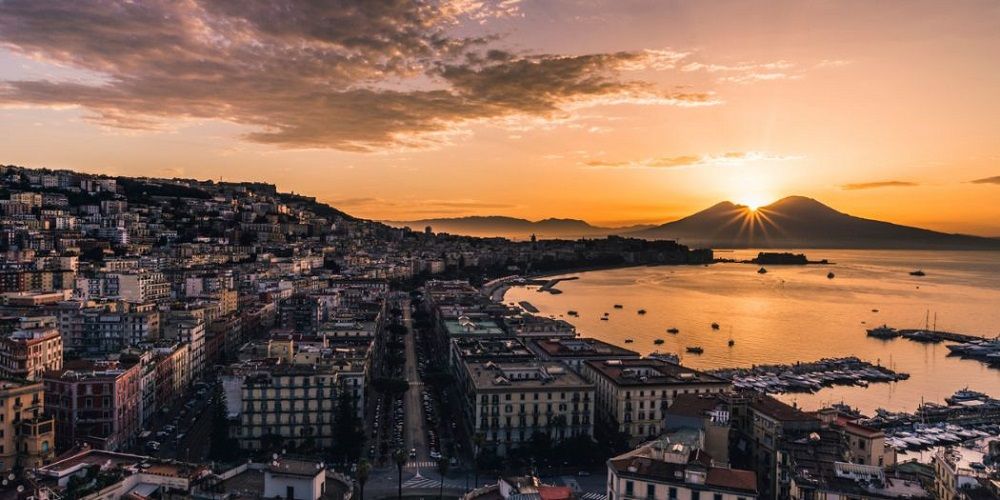
Vesuvius is one of the best known volcanoes in the world, but also one of the most dangerous, given the high population density living at its foot. The Neapolitan people fear and worship this huge sleeping giant, making it the city's symbol.
Its eruption in 79 AD is perhaps the most famous of all known explosions globally and the first written record of a volcanic eruption. We could say that volcanology was born at the foot of Vesuvius. Its last explosion took place in 1944, after which the volcano entered its resting phase, although it has always remained active.
Linked to the Vesuvius catastrophe of 79 AD, not far from Naples, are the famous excavations of Pompeii and Herculaneum, where you can step back in time to 2000 years ago.
Learn the facts about Vesuvius and walk around the crater15. The Gulf of Naples
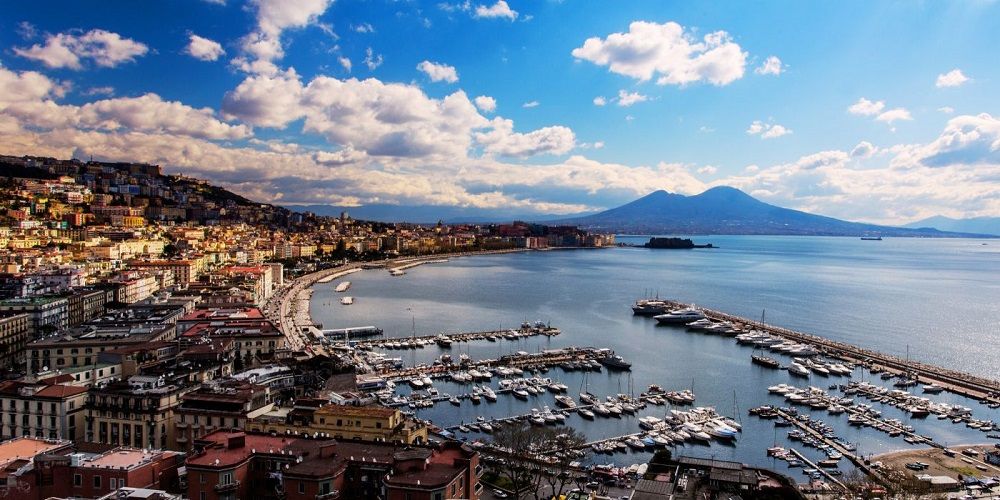
Vesuvius, the King of Naples, towers over the Gulf of Naples. The city's position within the gulf has allowed it, throughout history, to be the protagonist of multiple events. The Gulf of Naples is a true jewel of the Tyrrhenian Sea, opening south of the city of Naples, between the Flegrean Peninsula and the Sorrento Peninsula. A breathtaking inlet that boasts as much as 195 km of coastline, rich in history, nature and culture.
The beauty of the gulf is known worldwide and there is no need to explain why. Its uniqueness is the result of a mix of artistic, historical and natural beauty, accompanied by a mild and sunny climate. The gulf connects the city to the islands located not far from Naples, Ischia, Procida and Capri, to the Sorrento Peninsula, Amalfi Coast and Positano.
To fully appreciate the Gulf of Naples, one must experience it. Dedicate yourself to boat excursions, taste the delicious local gastronomy, attend festivals and festivals, and immerse yourself in its unique atmosphere. The Bay of Naples will leave you with indelible memories.
15.1 Its islands and the Sorrento Peninsula
But here in the Gulf of Naples, there are many must-see attractions. These include its three islands, among the most beautiful in Italy:
- Capri: the most glamorous island in the Mediterranean and one of the most visited in the world; Every year thousands of tourists from all parts of the globe are about to spend their vacations on the glittering island of Capri. An island not for everyone, certainly more expensive than its sisters, but the parterre of guests who visit it is as exclusive as few places on earth.
- Ischia: also called Green Island because of its rich vegetation, is among the most popular for spa lovers. Much loved by Neapolitans, Ischia is one of the main places where people spend their summer vacations, many Neapolitans have a second home on Ischia, and being much larger than the other two islands it offers a huge choice of where to stay, what beaches to visit, restaurants where to eat.
- Procida: romantic and colourful, it is the smallest of the three but not the least beautiful. Crowned in 2022 as the Italian capital of culture, Procida is a stage for TV series and movies, on par with Capri, much more natural and wild offers plenty of opportunities to relax, enjoy activities such as Kayaking, SUP or snorkeling.
The Sorrentine Peninsula has the same holiday appeal, a popular destination for tourists worldwide, who divide their time exploring its two stretches of coastline: the Sorrento Coast and the Amalfi Coast.
Capri: boat excursion from Naples15.2 The Phlegrean Peninsula
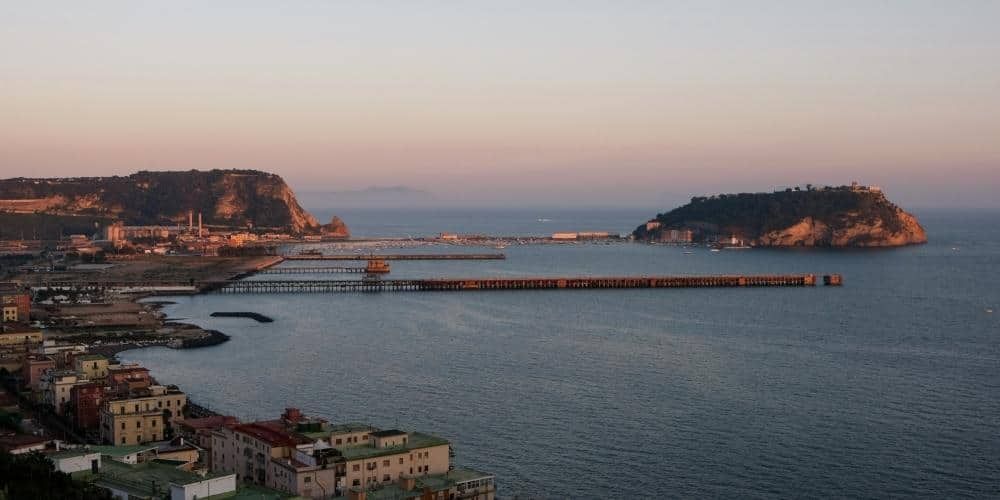
Campi Flegrei
Also in the Gulf of Naples is the Phlegraean Peninsula, famous for its thermal baths and the volcanic territory of Campi Flegrei. Here we find Baia, a large lagoon with a protected marine area and an important site for the phenomenon of bradyseism.
Monte di Procida is at the far end of the Gulf, formed from yellow tuff rocks. But the Phlegraean area is also famous for its fish specialities. Here, the Neapolitans often go for long fish and seafood feasts.
Napule è nu sole amaro / Napule è ardore e' mare / Napule è na' carta sporca / E nisciuno se ne importa / E ognuno aspetta a' sciorta (Naples is a bitter sun / Naples is the scent of the sea / Naples is a dirty paper / And nobody cares / And everybody waits for luck)
14. The Presepe
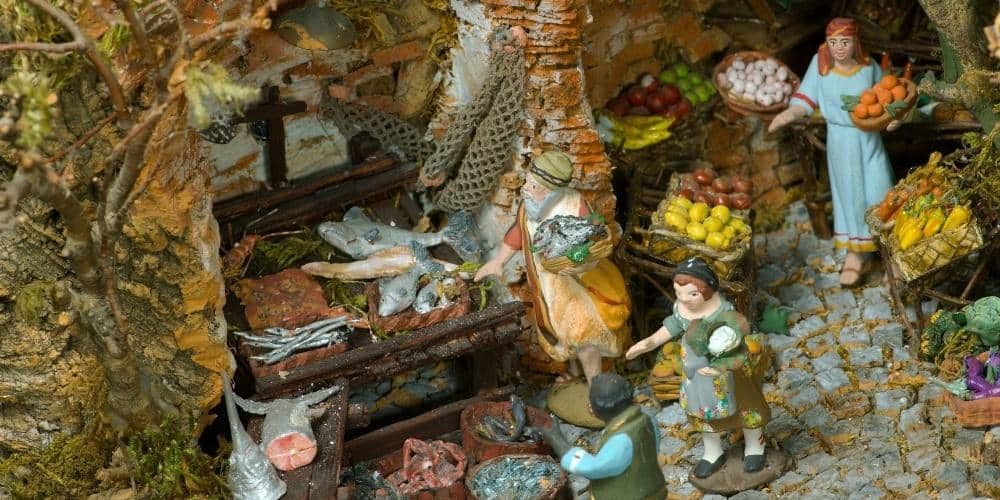
An important tradition of Naples that is exported to the world is the nativity scene, a representation of the Nativity of Jesus, revisited in a 16th-century key. Via San Gregorio Armeno is the emblem of this artistic tradition: full of nativity stores open all year round and where, in addition to the classic shepherd figurines, master craftsmen also enjoy displaying figurines of famous pop culture characters.
The artisan workshops of San Gregorio Armeno are a real tourist attraction. Here you can admire figurines of all shapes and sizes, made from a wide variety of materials: terracotta, wood, papier-mâché, porcelain and even glass.
The figurines represent classic nativity characters, such as the Holy Family, shepherds, Magi and animals, but also characters from popular culture, politicians, soccer players and even celebrities.
Every year, the artisans of San Gregorio Armeno create new figurines inspired by current events. If you are in Naples during the Christmas season, do not miss the opportunity to visit San Gregorio Armeno and immerse yourself in the magical atmosphere of Neapolitan nativity scenes.
The artisan workshops are open all year round, but the best time to visit is during the christmas season, when the atmosphere is even more atmospheric.
13. The Canzone Napoletana
Naples is then world famous for Neapolitan music. Their exportation inevitably occurs during the period of the great Italian emigrations. The roots of Neapolitan song go back to the Middle Ages, when Provençal troubadours arrived in the Kingdom of Naples, spreading poetry and courtly music. Over the centuries, Neapolitan song has evolved, contaminating with different musical and literary influences, becoming the centerpiece of Neapolitan popular culture.
Its characteristics we find Melodic and catchiness: Neapolitan song is distinguished by its catchy and catchy melodies, often accompanied by lively and engaging rhythms. Poetic lyrics: Neapolitan song lyrics are often poems in Neapolitan dialect. Recurring themes: Love, passion, joy, melancholy, hope and faith are the recurring themes that are explored.
Among the early proponents of the overseas success of Neapolitan song was Renato Carosone with his Tu vuò fa l'Americano (1956). Then in the 1990s it would be the turn of O' Sole Mio brought to prominence by tenor Luciano Pavarotti. Some of the greatest exponents of Neapolitan song include Enrico Caruso, Roberto Murolo, Sergio Bruni and Massimo Ranieri, up to the more modern and contemporary Pino Daniele, Gigi D'Alessio, Nino D'Angelo and Geolier.
12. Neapolitan Theatre
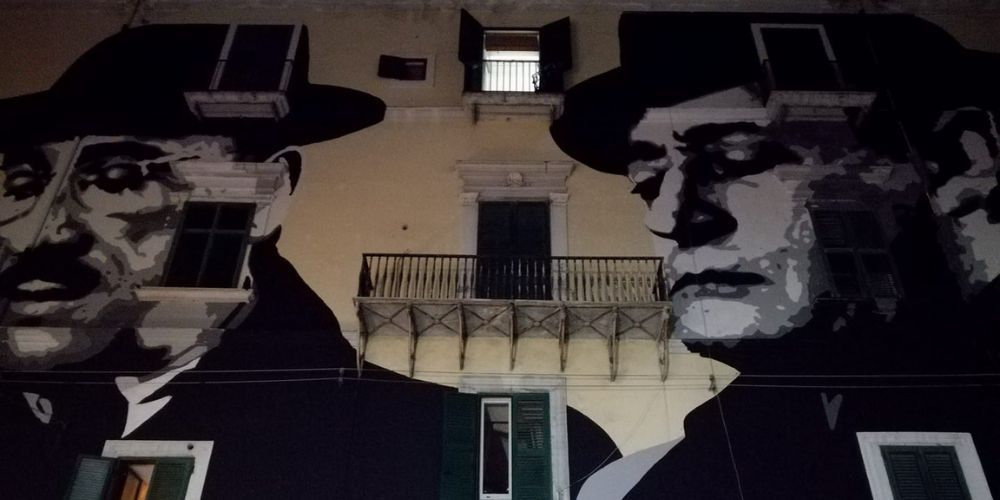
Naples has an important theatrical tradition known throughout the world. A genuinely authentic representation of folkloristic attitudes. Indeed, some say there is something dramatic behind every Neapolitan. Attitudes almost seem to be on the stage.
It all began with the mask of Punchinello, for whom a theatre was built specifically for comedies in dialect, the San Carlino.
However, in the 20th century, Neapolitan theatre saw its most extraordinary splendour. Among its exponents, we cannot mention the De Filippo brothers, the symbol of Neapolitan theatre. Eduardo De Filippo is considered one of the fathers of Neorealism.
And what about Totò, the king of laughter, born Antonio De Curtis. He straddled both theatre and cinema: in his 40-year career, he brought 50 operas to the stage and starred in 97 films. Self-taught and a lover of improvisation, he is considered one of the best-loved comic actors of all time.
11. The legend of Maradona
Maradona for Naples was, is, and always will be a God. The 1983/84 championship had just ended, and the then 24-year-old Diego, who was playing for Barcelona at the time, declared during a telephone interview, “I would love to play for Napoli.” He did not say “in the Italian league,” which at the time was among the best in the world, but pointed precisely to the Neapolitan club that finished the round that year in mid-table.
Maradona was a dragooner, a revolutionary and a leader who took the team and the entire city on his shoulders to correct and combat the errors of that Italy split in half that pitted North against South. Making himself the spokesman and standard-bearer of a movement aimed at balance and respect for the Neapolitan people.
Not to mention those famous 5 days of April 1990: string of five consecutive victories, overtaking Milan in the standings and Maradona raising the Italian Champions Cup. A triumph that Neapolitan fans still remember as an epic moment. Two Scudetti won in Italian stadiums, an Italian Cup, an Italian Super Cup and a UEFA Cup, a palmares that no one in Naples has been able to repeat in such a short time.
Diego Armando Maradona marked an era for Naples: wrenching the city out of victimhood and pedantic mentality. The myth of Maradona still lives on the city's streets today: many Neapolitan children are baptized with his name, and after his death, Naples' Stadio San Paolo changed its name to Diego Armando Maradona Stadium.
Maradona's monumental Naples: walking tour10. The blood of St. Gennaro
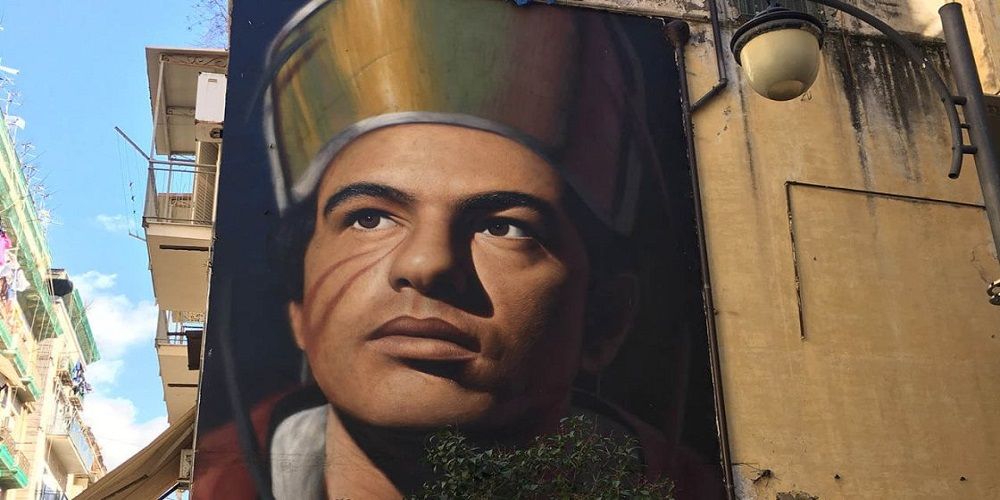
Many are the tourists in Naples who flock to the Neapolitan cathedral on September 19 along with the faithful to find out witness the miracle of San Gennaro: “But did San Gennaro perform the miracle?”
What is the miracle of San Gennaro? The miracle of San Gennaro is a religious phenomenon that occurs in Naples three times a year: on May 3, December 16 and September 19. On these dates, during a solemn ceremony in Naples Cathedral, the ampullae containing the blood of St. Gennaro, collected after his martyrdom in 305 AD, miraculously liquefy. This event is considered by the faithful to be a sign of divine protection and intercession of the city's patron saint.
St. Gennaro was beheaded for his Christian faith, and according to legend, a woman is said to have collected his blood in an ampulla and kept it to be venerated as a relic. The blood solidified but not completely. So the miracle is whether or not the blood liquefies each year: if the blood has melted, the miracle has been performed!
The miracle of San Gennaro is an event that has fascinated and moved Neapolitans and pilgrims from all over the world for centuries. Beyond scientific explanations, it represents a moment of deep faith and strong cohesion for the city community, not least because for Neapolitans, blood that does not melt is a bad sign of misfortune, interpreted as a sign of ominous portent for the city.
Guided Tour of the Chapel and Museum of the Treasure of San Gennaro9. Its Artistic Metro
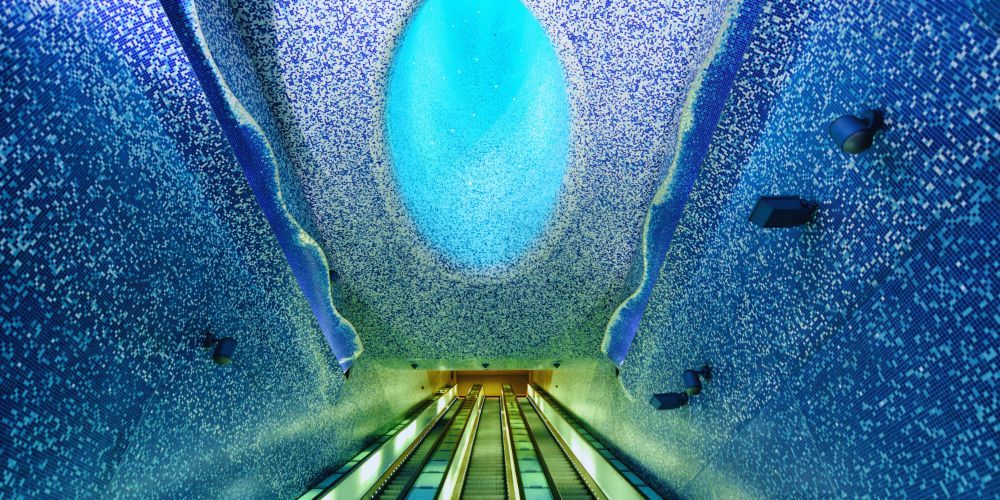
The Art Metro is one of the most beautiful and appreciated things in the city. The stations on line 1 (and some stops on metro 6) make up a veritable free museum—stations designed by great architects and full of installations with works by world artists.
There are currently 15 stations with around 200 works of art. One of the most beautiful is Toledo station, recognised as the most beautiful metro station in Europe. The structure features mosaic surfaces depicting scenes of Neapolitan life: the sea, Vesuvius, San Gennaro...
Find out how to move for free with Naples PassNapule è na' camminata / Int'e viche miezo all'ate / Napule è tutto nu suonno / E a' sape tutto o' munno / Ma nun sanno a' verità (Naples is walking / In the streets and among others / Naples is a dream / And the whole world knows it / But does not know the truth)
8. Its Markets

Naples is also known for its characteristic folk and district markets. Among the best known we certainly find:
- Posillipo market: where you can find vintage and original clothes;
- The Porta Nolana market: a very popular fish market, especially during the Christmas holidays but not only, at Porta Nolana there is a large market of clothes, new and used, that reaches all the way to the Directional Center, a place where you can get real sustainable bargains;
- Villa Comunale and Riviera di Chiaia: where the antiques market takes place;
- The Agnano antiques market: inside the Agnano Hippodrome, every weekend, one of the most beautiful and richest antiques markets in the entire city takes place;
- Poggioreale market: the most frequented market by Neapolitans, where you can find everything. The Poggioreale market is huge, from shoes, to clothes, dresses, coats, designer brands, you can find everything at very competitive prices.
- Antignano market: in the heart of Vomero is the Antignano market, where you can shop and buy basic necessities or buy clothes, shoes, suitcases, hats, costumes, everything, makeup and personal care products.
7. Its Street Art
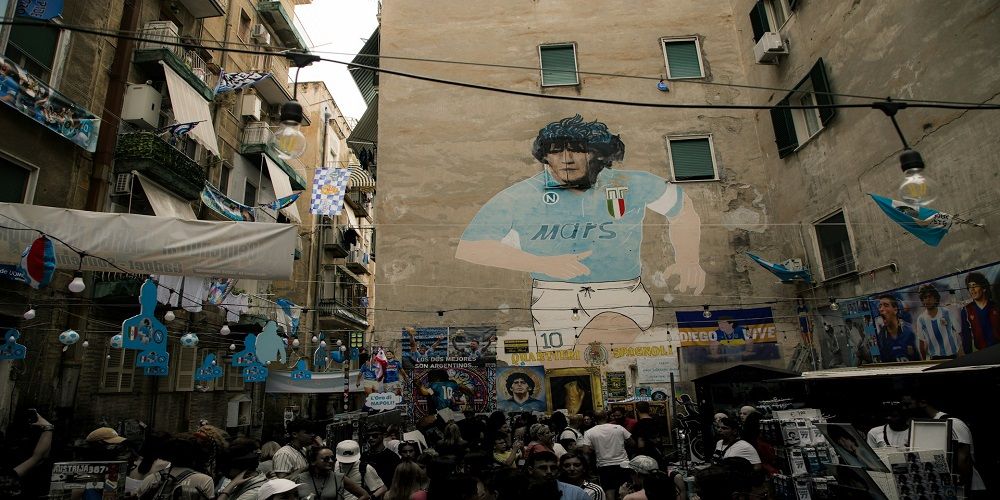
All the famous people of Naples, Totò, San Gennaro, Pino Daniele, Maradona, etc., are represented in the city's street art. It is a growing social phenomenon that includes gigantic works that redevelop entire neighbourhoods (see the case of Jorit's works).
Banksy's most famous work (the first-ever made in Italy) is a blue-grey Madonna with a gun instead of a halo. Others include the duo Cyop & Kaf, who have created more than 200 murals scattered around the corners of the Quartieri Spagnoli.
Among the most famous is Banksy's work (the first ever made in Italy): a blue-gray madonna with a gun instead of a halo. Others include the duo Cyop & Kaf who created more than 200 murals scattered in the corners of the Quartieri Spagnoli. The Mural Park in Ponticelli: an urban area completely covered in murals, with works by artists from all over the world.
Street art in Naples is an ever-evolving phenomenon, with new murals being created regularly. If you are passionate about urban art, Naples is a city you cannot miss!
6. The Neapolitan language: intangible heritage of UNESCO
One particular reason Naples is world-famous is its dialect, Neapolitan, recognised as a language in its own right and has become a UNESCO intangible heritage site. So it's no wonder that many foreigners who study Italian find it hard to understand Neapolitans.
As understood by UNESCO, the Neapolitan dialect refers to a group of high southern dialects spoken in regions other than Campania. Therefore, a sizeable linguistic strain that includes different dialects.
Neapolitan is recognized as:
- A minority language by UNESCO, included in the Atlas of Endangered Languages;
- A language protected by the European Charter for Regional or Minority Languages, ratified by Italy in 2003;
- Part of Italy's intangible cultural heritage, recognized by the Ministry of Cultural Heritage.
5. Its subterranean bowels
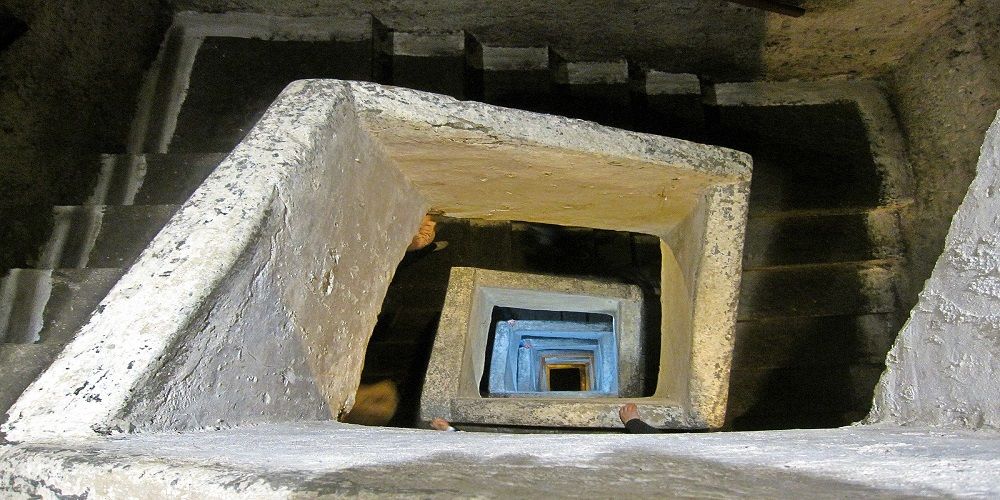
Beyond the surface Naples, strongly known is the Naples Underground, one of the city's most famous and fascinating routes.
Beneath the city of Naples, beneath those streets traveled every day by thousands of tourists and citizens, a dense network of streets and tunnels stretches for miles and miles, making up what is now Naples Underground, a city beneath the city. Among others not to be missed: the Galleria Borbonica, the Catacombs of San Gennaro and San Gaudioso, and the Fontanelle Cemetery.
Visiting Naples Underground is suitable for everyone, it is accessed from the main surface entrance located at 88 Piazza San Gaetano, walking down Via dei Tribunali is very easy. Visiting Naples Underground is a unique experience for anyone, I always recommend that you take a light jacket with you because even during the summer time the temperatures in the bowels of the earth are very low and it could get cold. The temperature is around 15 degrees Celsius, when it is over 30 degrees outside the temperature range is important! It remains a good idea in case of rain!
Underground Naples: Guided Tour4. Neapolitan superstition
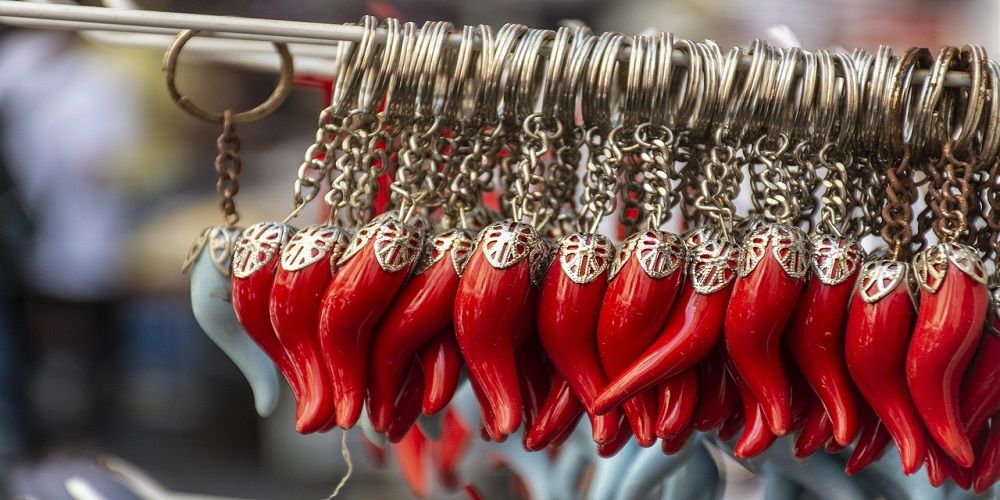
Neapolitan superstition is a web of rituals, gestures and propitiatory objects that influence and in some way determine the lives of Neapolitans. The origins of scaramancy are ancient, shaped by time, religious, pagan, Christian and even magical influences.
Among the most famous superstitious symbols are the cornicello rosso, a red chili pepper in the shape of a lucky horn, to be given as a gift to ward off bad luck. There are other superstitious symbols such as “horns,” the four-leaf clover, avoiding placing money and hat on the bed, touching iron. These are all gestures that evoke averts against bad luck. For example, the numbers 13 and 17 (considered bearers of misfortune and therefore avoided), avoid walking when a black cat crosses the street.
Folkloric figures such as the Munaciello, a mischievous elf, and the Bella 'Mbriana, a good luck witch, populate the Neapolitan scaramantic imagination. Scaramancy in Naples is not just superstition, but an expression of a deep connection with tradition and a sense of belonging to a community: “It's not true but I believe it!”
3.. The neapolitan coffee
Coffee in Naples is serious. It is an almost sacred ritual part of Neapolitan culture and Neapolitan-ness. Neapolitan coffee is unique, has an intense flavour. Making it, you need great skill and precise rules that respect the authentic Neapolitan tradition.
Many clichés surround Neapolitan coffee, such as the secret of its goodness lies in the Vesuvian water. In reality, the secret lies in the beans' unique roasting and preparation.
Rituals and stories revolve around Neapolitan coffee. The case of Caffè Sospeso (suspended coffee) originated in the Sanità district: the customer pays for two cups for an unknown indigent person who asks for them.
2. The archaeological park of Pompeii
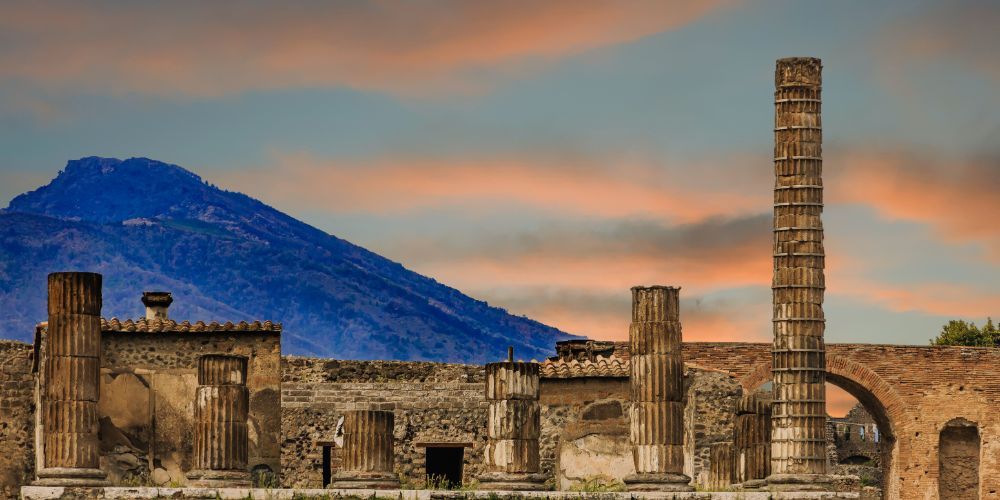
Pompeii Archaeological Park, a UNESCO World Heritage Site, holds the ruins of the ancient Roman city buried by the eruption of Mount Vesuvius in 79 AD. Strolling through its cobblestone streets, one takes a journey back in time, immersing oneself in the daily life of a thriving era.
Pompeii is a symbol of Naples and Italy, drawing millions of visitors from around the world each year. Its history and beauty make it a must-see for those who want to learn about ancient history and Italian culture.
Visiting Pompeii does not mean only admiring archaeological remains but reliving an entire civilization, imagining daily life, the sounds of the streets, the activities of the inhabitants, an exciting experience that makes this archaeological site unique in the world.
What to see in Pompeii? Among its ruins, you can admire villas decorated with frescoes and mosaics, public baths, the crowded Forum, the Great Theater and the small Amphitheater. The House of the Fauns, the Villa of the Mysteries and the House of the Baker are just some of the treasures to be discovered.
Discovering Pompeii1. Public parks and green areas: natural lungs
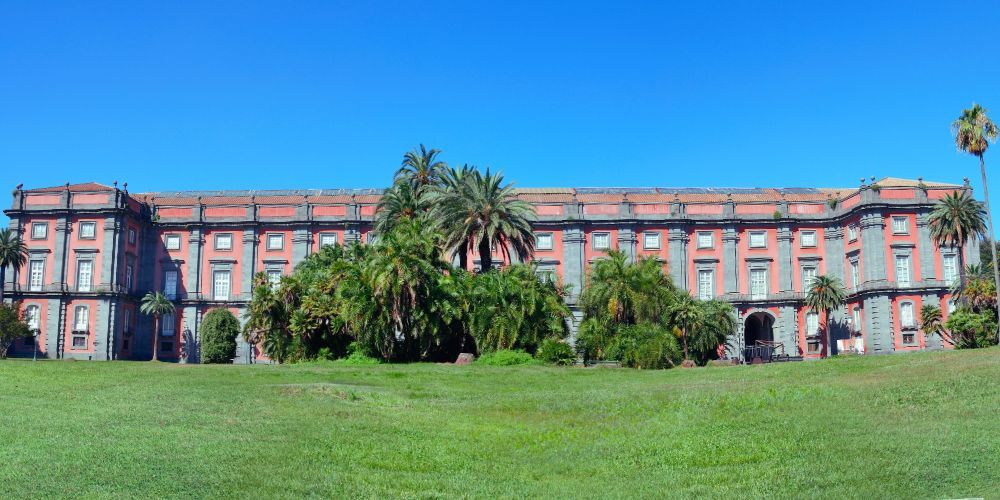
Naples is famous, like any big city, for having green areas and public parks that are ideal for spending days outdoors, breathing oxygen and clearing your lungs of city smog.
If you are a Neapolitan citizen or tourist looking for a green zone in which to relax, perhaps having a picnic or drinking a cool drink, or simply to take a walk or do sports, this is the perfect place for you.
Among the green areas in the city of Naples, mention must be made of the Real Parco di Capodimonte, the largest green area by size in the city within which the Real Museo di Capodimonte is also located.
The Virgilian Park is one of the perfect places to spend a relaxing day, preferred by many Neapolitans, especially by younger people and students, who like to spend their days outdoors studying on the green lawns.
The Villa Floridiana in Naples is one of the city's green lungs, located in the heart of the Vomero district. The villa is perfect for walks, escaping the smog and noise pollution of the city, having picnics or spending mornings reading. Inside the Floridiana Park there is also a belvedere from which you can admire a breathtaking view of the Gulf of Naples. Inside the park there is also the Duke of Martina Museum.
The Villa Comunale in Naples, just a few steps from the beautiful Mergellina waterfront is this huge green area, a public garden that separates the Riviera di Chiaia from the waterfront of Via Caracciolo. It has always been a perfect place for a walk, reading a book, eating, an ice cream, thanks to its open spaces it is perfect for sports activities.
The villa also has playgrounds for children, so dear parents if you have children and want to take a walk along the Naples waterfront you will then have the option of moving to the municipal villa to entertain your little ones.
The Vergilian Park named so because it houses the tomb of the supreme Virgil but not only that it also houses the tomb of the supreme Italian poet Giacomo Leopardi.
How best to enjoy Naples?
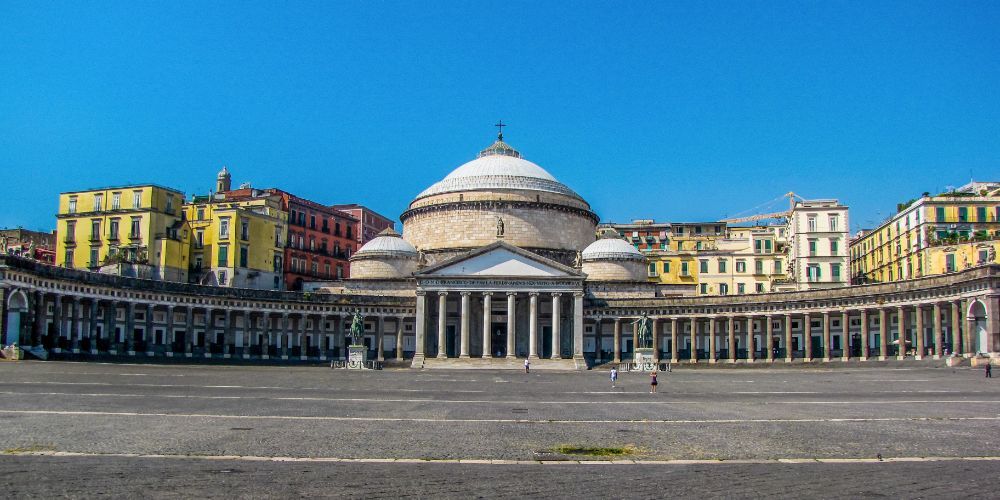
Enjoy all the beauty of Naples and its surroundings with the Naples Pass including public transportation and access to all the city's major attractions. How to do if you are short on time and want to visit as much as possible?
The answer to your questions is to rely on Blu Transfer's car rental with driver service. Prestigious cars equipped with all comforts to ensure your comfort during short and long trips. Regularly registered professional drivers with fluent English. Blu Transfer's service is available immediately, 24 hours a day, 7 days a week.
You can choose to turn to them as early as your arrival at the airport or once in town to reach nearby destinations such as the Sorrento Peninsula, the Phlegrean Peninsula or even Pompeii and Herculaneum.
So what are you waiting for, come to Naples!
Find out more about Blu TransferAbout the author
Written on 23/07/2024


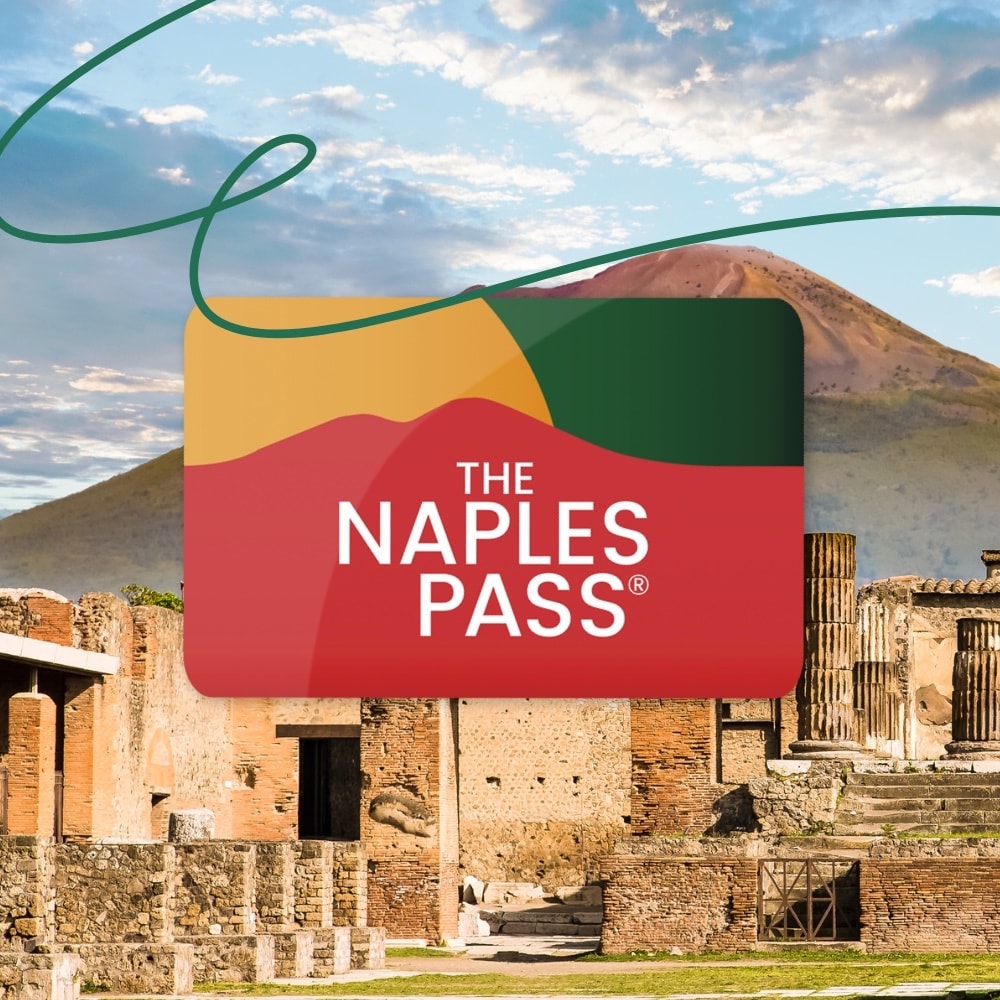
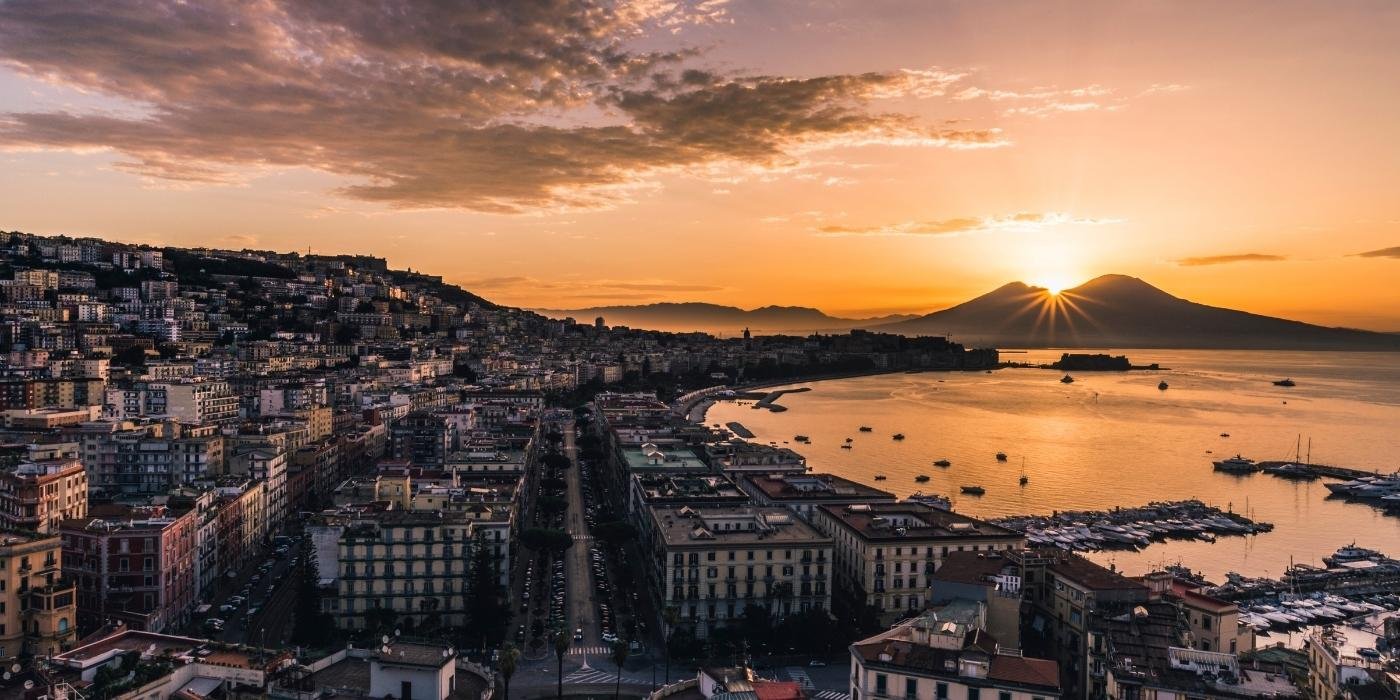

Ludovica Poliero
Why is Naples famous throughout the world? The city of a thousand colors and hues has many treasures. Here are 20 reasons why Naples is famous.